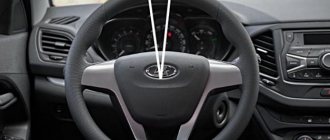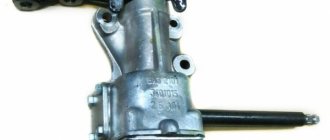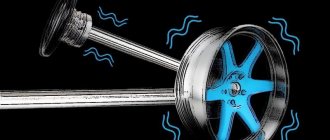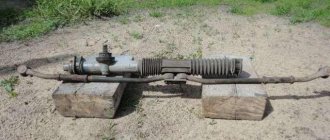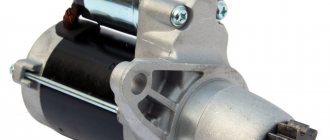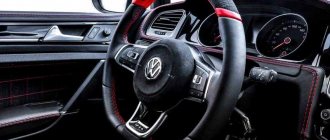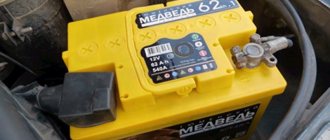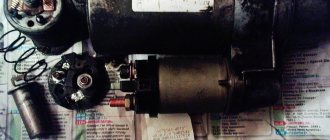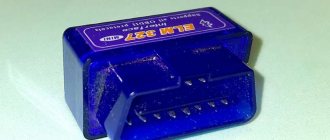The concept of play in the steering mechanism
In relation to the steering of a car, play is the amplitude of rotation of the steering wheel at which the car continues to move in the same direction.
A special rod, one of the steering elements, does not fit tightly to other parts, forming a gap. Due to this, the elements of the mechanism do not wear out during friction. The traffic rules set the maximum gap to no more than 10 degrees. Exceeding this value makes the car impossible to operate and requires immediate elimination.
Traffic rules of the Republic of Belarus 2022
The Traffic Rules given in this section are the current Traffic Rules of the Republic of Belarus 2022, improved with hyperlinks and pop-up help windows (changes and additions to Decree No. 349 of the President of the Republic of Belarus dated August 10, 2015 and subsequent decrees are taken into account).
The source of information is the National Register of Legal Acts of the Republic of Belarus. Reference data bank of legal information of the Republic of Belarus.
The Traffic Rules highlight special active elements. The active element of the text in the traffic rules of the Republic of Belarus is an indication in the text of the Rules to another paragraph of the Rules, to the number of the road sign or to a term and other instructions. The graphical active element in the traffic rules is all images of road signs and road markings, as well as images of road traffic lights.
In the Traffic Regulations of the Republic of Belarus, a hint window and a hyperlink are attached to the active element.
The traffic rules of the Republic of Belarus contain implicit terms. Such an implicit term of the traffic rules, for example, is the term “Congestion”, and its definition: “Congestion is a cluster of other vehicles stopped on the roadway” is obvious from clause 53.2 of the traffic rules:
"53.2. when a vehicle is forced to stop on the roadway and in places where stopping is prohibited, with the exception of stopping the movement of the vehicle due to the accumulation of other vehicles stopped on the roadway (hereinafter referred to as a traffic jam).”
Note that additional emphasis on implicit terms allows you to better understand the Rules of the Road! We found about 20 such implicit terms in the traffic rules of the Republic of Belarus.
Interactivity in the online traffic rules of the Republic of Belarus is ensured as follows:
Pop-up help windows may also use implicit traffic rules terms, various traffic rules groupings and creative traffic rules memos.
Closely related to the Belarus traffic rules section is another section of the website “Road Rules 2020” - Express tests. Express tests are a new type of testing according to the Belarusian Traffic Rules. This type of testing covers all points of the traffic rules and tests the test taker for accurate knowledge of the important requirements of the Rules. At the same time, express tests for traffic rules are quick tests that do not take much time during the testing process. Express tests are quick and easy. A quick question in electronic form is a high-tech, informative and educational question. Compared to classic traffic rules testing of the form “Question - Illustration (if any) - Answer options", express testing is an alternative test and has its advantages.
Select below what interests you in “Traffic Regulations Belarus” now: chapters of the Rules, appendices to the Rules, decrees of the President of the Republic of Belarus:
Expand all Decrees of the President of the Republic of Belarus in the section “Traffic Rules Belarus”
Expand all Chapters of Traffic Regulations (27 chapters) in the section “Traffic Regulations Belarus”
Expand Appendix 1 “Road traffic lights” in the section “Traffic rules Belarus”
Expand all chapters and paragraphs of Appendix 2 “Road Signs” (2 chapters, 7 paragraphs in each chapter) in the “Traffic Rules for Belarus” section
Expand all chapters of Appendix 3 “Road markings” (3 chapters) in the “Traffic rules for Belarus” section
Expand all chapters of Appendix 4 “List of vehicle malfunctions” (7 chapters) in the “Traffic Rules for Belarus” section
Expand Appendix 5 “Vehicle identification marks” in the “Traffic rules for Belarus” section
Go to the Express tests section of the site.
A little information on the traffic rules of the Republic of Belarus:
There are not enough illustrations in the decrees of the President of the Republic of Belarus on traffic rules. In 2009, a scientific and practical publication appeared - a commentary on the Traffic Rules, 560 pages in size with black and white illustrations.
The commentary to the Traffic Rules does not currently reflect the important changes made to the Traffic Rules by Decree of the President of the Republic of Belarus dated October 13, 2014 No. 483 “On Amendments and Additions to the Traffic Rules.”
Causes of backlash
After a long period of operation, the working surfaces of the roller, bearing, bushing, washer, bipod shaft and its T-shaped groove, and the head of the adjusting screw become unusable. Thus, the gaps in the steering device increase, while the car is moving, extraneous knocks and vibrations appear, the wheels become unstable and wobble. Initially, a gap appears at the point of contact between the roller and the worm; subsequently, simultaneously with the steering shaft, an axial displacement of the worm occurs.
When traveling at high speed, the car becomes uncontrollable, which can lead to serious consequences, including an accident.
The main reason for the occurrence of backlash is the disgusting condition of the roads. The car's suspension takes on the bulk of the load, which is directed to the wheels, but some of it still falls on the steering parts. The situation is aggravated by the use of low-quality rubber, which significantly reduces the service life of the steering rod and suspension.
Loosening the nut
The “innocent” cause of the malfunction is the loosening of the steering wheel nut. Adjustment is performed by tightening the screw in the end cover of the steering mechanism. First, the decorative element of the fastening casing is removed, then the nut is tightened with a socket wrench of the required diameter.
If an airbag assembly is installed in the car trim (this applies to modern cars), it must first be dismantled to provide access to the nut. Work is carried out with the battery terminals disconnected in order to comply with safety precautions.
Important! If you do not tighten the fastening nut in a timely manner, this will lead to wear of the splines in the place where the steering wheel is attached, resulting in the steering wheel turning and loss of vehicle control.
Wear of rod ends
A more dangerous cause of play in the steering is wear of the rod ends. Due to the fact that these elements operate in difficult conditions, being constantly exposed to dirt and water, they deteriorate faster. As a result, the axial and radial clearances in the ball joint of the tip increase, it falls apart and driving the car becomes impossible. To avoid the consequences of such a malfunction, you should immediately contact service to replace parts.
Also, there are several reasons for the formation of free play, hidden in the design of the steering system.
- collapsed wheel bearing;
- loosening or improper tightening of the steering wheel nut and adjusting rods;
- wear of the ball joint;
- depreciation or breakage of hinges, splines, driveshaft joints;
- excessive gap between the toothed bar and the gear, or their wear;
- unsuitable hydraulic oil.
Signs that repairs are needed
Gazelle steering gear repair
In any car, the steering parts are subject to the greatest degree of wear, since they bear heavy loads when driving on uneven roads, cornering, and sudden braking. Therefore, the Gazelle steering gear often fails, as a result of which it is urgently adjusted. The list of signs of malfunction of the unit in question usually includes:
- Vibration or knocking in the device transmitted through the steering wheel;
- Having difficulty turning the steering wheel;
- Presence of play in the gearbox;
- Oil leaks in the mechanism.
If one or several signs appear, immediate adjustment of the steering gear is required, which will allow timely elimination of malfunctions in the operation of the device and reduce the risk of failure of other components of the vehicle.
Gazelle steering gear
| External video files | |
| Rack and pinion steering with torsion spool drive | |
| Screw spool drive, similar to ZIL-130 | |
| Screw-type spool drive, outdated design | |
The hydraulic booster is a closed hydraulic system consisting of a pump, a pressure regulator, a reservoir with a supply of hydraulic fluid, a control spool and a hydraulic power cylinder.
A pump (driven by a car engine or an electric motor), a pressure regulator (usually in the form of a bypass valve that drains excess pump flow past the spool) and a reservoir with a supply of hydraulic fluid are designed to create a working pressure differential in the booster hydraulic system.
A double-acting hydraulic power cylinder (that is, capable of creating force in two directions) in modern passenger cars is usually integrated with the steering rack and transmits force to it. The spool is installed on the steering column and reacts to the torque on the column shaft.
Many ways have been invented to convert steering wheel torque into spool action. Most are based on the mobility of a separate section of the steering column shaft. In modern cars, the role of a movable element of the column is usually played by a torsion bar - a radially springy section of the steering column shaft. The spool reacts to the angular shift between the ends of the torsion bar when there is force on the steering wheel. There are designs with axial mobility of the steering column shaft section: the axial movement is set by a screw gear that converts the rotational force of the steering wheel into translational movement of the spool rod. In some designs, the turning force of the wheels is recorded not at the steering column, but at other units transmitting force from the steering wheel to the wheel.
An example of a hydraulic booster combined with a steering mechanism is the hydraulic booster used on ZIL-130 and ZIL-131 vehicles [edit | edit code]
When the car moves in a straight line, the spool is held in a neutral position by springs, while all the spool channels are open.
When turning - when the steering wheel rotates, the screw rotates and screws into the ball nut. At the same time, it moves together with the spool and bearings and displaces the plungers, compressing the springs. As soon as the bearings rest against the housing, the screw with the spool will stop moving, and the ball nut with the piston and rack will begin to move, as if screwing onto the screw. When the spool moves, the central channel from the pump will remain connected to one of the side channels, and the other side channel will remain connected to the drain channel. When the piston moves, the force will be transmitted from the rack to the sector, and from it through the shaft to the bipod. Since the central channel from the oil pump is connected to one of the side channels, the oil will flow from it into one of the cavities of the hydraulic cylinder and will put pressure on the piston, helping to displace it and facilitating the force applied to the steering wheel.
When the steering wheel stops rotating, the screw stops screwing into the nut and minimal piston movement is transmitted to the screw and spool. The spool returns to the neutral position. All channels open, oil from the pump begins to drain, and the amplifier stops working. In addition, the return of the spool to the neutral position is facilitated by springs pressing on the plungers and bearings.
How to diagnose a malfunction?
Steering play is especially pronounced when driving on a straight road at high speed. A sign of a breakdown is a knocking sound when the steering wheel is turned sharply. An increasing knocking sound while driving on uneven terrain indicates damage to the steering ends and rods. Knocking into the steering wheel indicates a faulty steering bar.
If the steering wheel “beats” when driving, this indicates a failure of the ball joint or steering ends. The cause may also be wear of the bushing, bearing, or crosspiece.
A noise of unknown origin when turning the steering wheel indicates the need to check the fluid level.
A change in the given direction of movement of the car with the steering wheel in a straight position, the feeling that the car is “pulling” to the side, indicates an unbalanced camber - wheel toe-in.
The steering wheel turns jerkily if the steering bar is jammed. If it turns with force, you need to check the operation of the amplifier.
To find out if there are problems with the steering, you should do a small check:
- Start the engine and leave it idling.
- At the same time, check the operation of the hydraulic booster.
- Align the front wheels parallel to the longitudinal axis of the car.
- Turning the steering wheel in one direction and the other, record the moment when the front wheels begin to move. Play (free play) will be the gap that the steering wheel goes through before the wheels move.
To more accurately determine the gap, use a special backlash meter.
Hydraulic booster without fitting
If the hydraulic booster is not equipped with a fitting for bleeding air, the pumping process is performed slightly differently. Initially, operations are carried out with the engine turned off. To do this, the front of the car is hung out.
Liquid is poured into the tank to the level. Then you need to turn the steering wheel from lock to lock several times.
Then the car lowers to the ground. Then you will need to start the engine and let it run for a few minutes. Next, the steering wheel must be turned again from the stop, first to the left, then to the right, without stopping in the extreme positions. In this case, you need to monitor the liquid level and top up if necessary.
During this operation, foam forms on the surface of the liquid in the tank. Then you need to stop the engine and wait until the foam disappears. The pumping has been completed.
If you constantly hear noise under the hood, this indicates wear on the bearings of the power steering pump. In this case, the pump is replaced.
Eliminating play in the steering
To adjust the steering, you will need the usual set of simple tools to adjust the mounts. All troubleshooting work is carried out in a garage with an inspection pit, overpass, or with a lift.
If the playmeter or manual diagnostics show unsatisfactory results, proceed to the following actions (the help of a partner will be required):
- Determine the source of the knock and check the operation of the suspensions.
- Try to tighten the steering bar.
- Holding the steering wheel, turn it from side to side within the limits of free play, while simultaneously observing the operation of the driveshaft near the rack and ball joints. And also monitor the tightness of the mating rods, which must fit exactly into one another.
- If the steering rack is not damaged, turn the adjusting screw to eliminate the play in the rack.
- Free play in the cardan shaft most often occurs due to lack of lubrication. It can be eliminated only by replacing the part.
- Backlash at the junction of the rods is eliminated by spot welding, which holds the parts together during operation.
- Repair or replace ball ends if necessary.
- Pay special attention to the serviceability of the tips and the integrity of the rubber boots.
- Check whether the steering wheel play has been eliminated.
Adjusting the steering rack without removing it
Lada Priora hatchback Logbook Steering rack repair
If you cannot decide how to tighten the steering rack on a VAZ 2110, we recommend that you familiarize yourself with the second option - without removing it.
For this method, arm yourself with a special wrench, which is made in the form of an octagon, 17 mm in size.
The steering wheel should be tightened to “tens” only in cases where knocking noises are observed during operation of the steering mechanism. It’s not worth it to just do work without a real need.
- Drive into the inspection hole or lift the car on a lift.
- Remove the engine guard, take a flathead screwdriver and hold a good light under the car.
- Locate the rear subframe at the rear of the steering rack. There the rack and shaft should intersect. The adjusting nut is located in that place. Do not confuse it with the adjusting nut plug. This is a common mistake made by beginners.
- If the steering gear was previously untouched, there will be a green plug on the nut. It functions as a stopper and is installed directly at the factory.
- Use a flathead screwdriver to remove the plug. It will probably break, but there's nothing wrong with that.
- After removing the stopper, pick up a specialized adjusting key and tighten it, moving clockwise. Do not press too hard. The degree of clamping directly depends on the strength of the knocks when moving.
- Turn the key 10 degrees, check the rack for play. If it is present, press more. It is not recommended to rotate more than 15 degrees at a time.
- Checking the degree of clamping is quite easy. Take the rack and turn it sharply in one direction or the other. If no extraneous noise is observed, the rail is tightened well.
- There is no point in trying to replace the stopper, even if you managed to keep it intact. It does not carry any benefit.
Video
We figured out how to adjust the steering rack on a VAZ 2110 with and without removal. Which option is more attractive to you - decide for yourself. By removing the rail, you can additionally perform some other work, check the condition of the units, components, replace something, tighten it.
Obviously, it is more than possible to carry out the adjustment yourself. The only caveat is the search for a specialized adjustment key specifically for the VAZ 2110 car. Without it, you cannot do anything; there are no analogues among the available tools. It is not expensive, so there is no need to worry. But also to squeeze.
Management problems
Control problems, along with brake failures, are the worst things that can happen to a car in motion. The real harbinger of such problems is steering play. Let's figure out what it is and how to protect yourself.
So, play is a flaw in the steering. It occurs due to problems with the steering rack, or the calibration of the steering wheel itself. Essentially, this is a poor reaction of the wheels to turning the steering wheel, which is expressed in the form of a reserve.
To put it simply: if you turn the steering wheel to the side, but the wheels do not react immediately, this is the same play. It’s worth noting right away that many manufacturers provide a slight free play of the steering wheel, without “hooking” the wheels themselves. You can find out the corresponding freewheel parameters in the technical documentation of your vehicle.
NCH Software - all developer programs
Doxillion Document Converter is an easy-to-use program that is a multi-format text document converter that allows you to quickly and easily batch convert all popular file formats...
1.56 MB | Shareware |
VideoPad Video Editor 8.56
VideoPad Video Editor is a video editor with support for a huge number of graphic and video formats. Offers a wide range of transition effects, video optimization tools and audio tools. The result can be saved to a PC or written to disk...
2.91 MB | Shareware |
WavePad is a convenient audio editor that provides all the necessary tools for working with sound. It is possible to apply various effects, batch process files...
1.82 MB | Shareware |
PhotoPad Photo Editor 6.30
PhotoPad Photo Editor is a free digital image and photo editing program. Using the application, you can easily crop, rotate, resize images, remove red-eye and other defects from photos,...
2.48 MB | Free |
RecordPad Sound Recorder 9.03
RecordPad Sound Recorder is a small and easy-to-use utility for recording audio from various sound sources (built-in microphone system, external microphone, stereo mixer, etc.), and then saving it to your hard drive in WAV, MP3 format...
1.05 MB | Shareware |
MixPad is a professional program that allows you to quickly create music collages, advertising audio clips, soundtracks, remixes, etc. by mixing tracks at home...
1.76 MB | Shareware |
PhotoStage Slideshow 7.27
PhotoStage Slideshow is a convenient and easy-to-use tool for creating slideshows and presentations. The program allows the user to easily combine digital images, videos, music, add transition effects to them...
5.24 MB | Shareware |
Voxal Voice Changer 4.04
Voxal Voice Changer is a program with which you can change your voice, which is achieved through the use of various effects (for example, changing the pitch, adding echo, etc.) in real time...
1.07 MB | Free |
Pixillion Image Converter 7.08
Pixillion Image Converter is a multi-format converter of digital images and photos, with editing functions and the ability to create slide shows. The program allows you to batch convert up to a thousand files simultaneously, resize...
1.31 MB | Shareware |
DrawPad Graphic Editor 6.15
DrawPad Graphic Editor is a simple utility for creating and basic editing of graphic shapes...
Other troubles
In addition to backlash, you should be attentive to other troubles associated with turning and steering:
- Increasing effort. If you notice that you need to apply more and more force to the steering wheel in order to make a turn, then this is also a sign of a problem. This happens due to wear of the rack or gearbox.
- Spontaneous deviation. Let's assume that you parked your car in the evening, leaving the steering wheel strictly in the center. In the morning, getting into the cabin, you noticed that it was tilted, while the wheels remained straight.
- Leaks. Liquid can leak both from the rack seal and from the power steering barrel. You can find them under your car, or during a self-inspection in a pit.
If one of these aspects is detected, we recommend immediately contacting the service and checking the mechanisms. One diagnostic that you pay for can save not only your future budget, but also the health and life of you and your passengers.
Tolerance
As we have already said, automakers set the permissible amount of play. It is usually 2-3 millimeters, or degrees of slope. They are necessary so that the control mechanisms are not under constant pressure and, accordingly, last longer due to less wear.
The norm is prescribed in the technical documentation, but it may be different for different vehicles. Usually for buses and trucks it is slightly higher, again, due to the greater load on the steering rack. For passenger cars it is limited to a couple of degrees.
List of faults and conditions under which the operation of vehicles is prohibited
Wheels and tires 5.1 Tires of passenger cars have a residual tread height of less than 1.6 mm, trucks - 1 mm, buses - 2 mm, motorcycles and mopeds - 0.8 mm. Note For trailers, standards for the residual tread height of tires are established, similar standards for tires of vehicles - tractors.5.
2 The tires have external damage (punctures, cuts, breaks), exposing the cord, as well as delamination of the carcass, peeling of the tread and sidewall. 5.3 There is no fastening bolt (nut) or there are cracks in the disk and wheel rims, there are visible violations of the shape and size of the mounting holes. 5.4 Tires do not match the vehicle model in size or load capacity.5.
Examination
Checking the play can be carried out either independently or with the help of service specialists. In order to find out the value yourself, you will need a ruler, some kind of marker or chalk and the attentive eye of an assistant.
- Set the steering wheel to a normal, straight position. You can determine it using a ruler with a water capsule, the so-called level.
- Having placed the steering wheel, we make a mark at the very top of it. We place a regular ruler in front of the steering wheels. We compare the mark with the reading on the ruler. Let's say we got the mark to be at 15 centimeters.
- Then, we slowly turn the steering wheel, counting the centimeters by which we have deviated. For example, we rotate it to the left, which means our mark will approach 14 centimeters and further.
- Our observer watches the wheels and signals when they have moved. When we received his command, we stop the rotation and record the indicator. Let's say our mark remains at 13.5 centimeters. This means the play is 1.5 centimeters.
- This work can be ideally done using a protractor. You just need a big one, something like what engineers and architects use. It can be purchased in the office supply department. The principle is the same, but the data obtained will be in degrees, which suits us better.
At a service station, such work is carried out using a special device - a backlash meter. This is a small computer that connects to the steering wheel and calculates the deviations itself. Naturally, it is much more accurate and gives a better picture of the situation and the necessary corrections. With its help, the total play of the steering wheel is calculated. If the documentation does not allow it, then we need to move on to correction.
Removing the gearbox
The design of the gearbox does not allow it to be repaired without removing it from the vehicle. In order to remove it, you must:
- Disconnect the tie rod ends from the gearbox. First, they are uncoiled, then the nuts are unscrewed with a 22 wrench and the tips are pressed out using a special puller.
- Unscrew the clamp securing the steering shaft to the gearbox.
- Remove the three bolts that secure the gearbox to the car body.
"Six" can look stylish
Steering was present in all cars: from the very first to the latest models, which not everyone can afford to buy. This part of the machine should not be changed, as safety depends on it. It is prohibited to make any changes to the control design. VAZ classics are popular - these are rear-wheel drive cars with a worm-type gearbox. But the steering column of the VAZ 2106 is different from the one installed on the 2107 model.
The latter is a little longer despite the fact that their scheme is almost the same. The VAZ 2107 model is equipped with a safety shaft, which folds in the event of a frontal collision and cannot injure the driver. The VAZ 2106 does not have such a system; the shaft is solid and does not contain hinges. There are also problems with the gearbox, which can be solved by simply adjusting the steering column. But the mechanism also has “incurable diseases”, in which it turns out to be easier to buy a new steering wheel and install it in place of the old one.
How to fix
What to do if the indicators are critical? Of course, eliminate the found play. The main reasons are in the steering column. She can betray her illnesses not only with deviations, but also with a corresponding knock. You will most likely notice the knocking only when the deviation is already large enough and adjustment is needed.
It is not possible to completely remove free play; remember the necessary margin to extend the service life of parts. We need to reduce it until we reach critical levels. Therefore, we climb into the area of the steering rack.
Task: tighten up all the parts and replace such consumables. Take a wrench or hexagon. We find the nuts that secure the spare part. It will be located next to the oil seals or other rubber elements. We need to adjust these nuts.
The process is not fast. We tighten it a little bit, and then take new measurements. And so on until we get to the right degrees. Additionally, you can replace the oil seals, lubricate everything that requires it, and check the fluids if we are talking about the hydraulic booster.
Often the driver is faced with such a malfunction as steering play. This problem can lead to serious problems, so it is important to detect and fix the problem in time.
The content of the article:
The steering is one of the most important for driving, and failure in the form of play is not one of the pleasant situations. Often the reason for the appearance can be various reasons, such as poor running gear, wear and tear of parts, and, most often, the condition of our roads. Therefore, we will consider how to identify play in the steering and how to carry out repairs.
The concept and causes of play in the steering mechanism
The steering design itself is not complicated. It contains a special rod that does not fit tightly to the car parts. It must have a small gap so that the parts do not wear out in case of friction. However, if the total play reaches fairly large levels, this can cause serious malfunctions, which can lead to accidents on the road. A backlash of 10° is considered an acceptable norm.
It is important to remember that a small play can develop into a large one, and therefore you should carefully consider this issue if there are clear signs of problems with the steering. These signs may include knocking, squeaking, vibration, or the need to turn the steering wheel hard to the left or right, even on a flat road. In this case, the steering wheel stops “obeying” the driver or performs actions somewhat late.
There are several reasons for the appearance of play and they all lie in the steering design itself. One of the first reasons may be that the tip or bearing has failed due to wear.
The second reason may be a recent car repair, namely the fact that sometimes the central hub nut is not sufficiently secured. This is where the backlash comes from. Also, free movement of the steering wheel may indicate that the hydraulic oil is becoming unusable and needs to be replaced.
In general, in order to discover the true cause of technical problems, the driver must check every detail of the entire steering system, since all parts and mechanisms are interconnected.
Device
The steering system on the VAZ 2107 is quite reliable. With its help, a sufficient level of controllability is achieved. Of course, the comfort of the car cannot be compared with modern models, but in general, this model is comfortable to drive.
Control is carried out by transmitting force from the steering column to the wheels. This happens through a gearbox with a worm gear. The steering column itself on the VAZ 2107 is composite. It consists of two parts connected by a universal joint. This allows it to fold up in the event of an accident, and leads to less injury.
The gearbox has an aluminum housing attached to the left side member (in some export versions to the right side). The body contains a globoidal worm. It is combined with a double-ridge roller. The gear ratio of this gearbox does not exceed 16.4. This allows the force to be transmitted as accurately as possible. The design also includes 2 ball bearings. They allow you to avoid increased wear of elements. Worm mechanisms are very sensitive to friction, so the gearbox contains gear lubricant. It must be checked regularly and added if necessary.
The steering mechanism also includes the following elements:
- Middle tie rod;
- Pendulum arm;
- 2 lateral (short) pulls.
The middle link is connected directly to the gearbox. This is a fairly reliable structural element. Failures of the long tie rod are rare. A pendulum lever is attached to it on the right. It ensures the stability of the entire system. Small tie rods have ball joints at the ends. This allows you to transfer force to the steering knuckle as efficiently as possible and without heavy loads. These levers are prefabricated. Thanks to the screw thread, it is possible to adjust the wheel alignment angles. The service life of these parts is from 10 to 15 thousand kilometers. When replacing, the new rods are made similar in length to the parts removed.
Conclusion
. The steering on the Zhiguli has its own characteristics. At the same time, such solutions are practically not used on modern cars. Therefore, the question of how to remove steering play on a VAZ 2107 is not uncommon. In general, fixing the problem is not difficult. But, in some cases, the adjustment does not help, then the gearbox will have to be replaced.
Welcome! Steering wheel play is a fairly common problem in almost all cars, especially cars of the “Classic” family. Backlash can occur for various reasons, ranging from a banal collision with a bump and ending with a malfunction in the steering system itself, so in order to remove the backlash you will have to make an effort that you will appreciate in the future.
Note! To adjust the backlash you will need to stock up on: A screwdriver and also a wrench set to “17”!
Read more: Lukoil Lux 5w40 fake
What can cause backlash? In fact, it occurs for various reasons, some of which were described above. But if play occurs, this may be to blame: A loose or heavily worn fastening of the steering mechanism, as well as the pendulum arm and the steering rods themselves.
Note! Before sinning on all these items of the steering mechanism, it is first recommended to check and, if possible, correct the increased gap that can be found in the engagement of the roller with the worm of the steering mechanism - we will do this adjustment!
How to determine the appearance of play in the steering
In order to check the car for problems with the steering, namely the presence of play, the following operations must be performed. First of all, it is necessary to switch the engine to a special operating mode when the vehicle is stationary - idle. After this, you should start turning the steering wheel and monitor the response time of the wheels to these commands. It is this distance that shows the amount of play.
Today, for the convenience and accuracy of measuring backlash, there is a special device - a backlash meter. It helps to measure and control the total backlash.
Checking the steering play of the VAZ 2107
Large play in the VAZ 2107 steering wheel is a vague concept. Meanwhile, the permissible steering play has established standards. For “classics” it is 5 degrees. To check the backlash, a special device is used at the service station - a backlash meter. At home you can do without it. To do this you will need a ruler, chalk (or wire) and the help of a partner. Checking the amount of play is carried out as follows:
- place the machine on a level surface;
- check the tire pressure and inflate them if necessary;
- align the steering wheel so that the wheels are directed parallel to the axis of the car;
Eliminating play in the steering
First of all, the check should begin with the universal joint and its screws. Turn the adjusting screw to the required value. Afterwards, check again for the presence and amount of play. If the results are unsatisfactory, do the work again.
If this does not help, then the cause of the breakdown lies elsewhere. The next step is to drive the car into the inspection hole. The problem of play may lie in the steering rod joints. Most likely, these parts are worn out and there is a need to replace them or firmly fix them. You should also check the fastening of the steering rods and tighten them if necessary.
However, if this does not eliminate the cause, then most likely you will have to disassemble the entire steering system. It is better to do this at a car service center, as there is a risk of damaging the system.
Troubleshooting methods
Possible ways to reduce the amount of play:
- adjusting the screws that reinforce the cardan joints;
- checking the fastening of the steering rack and tightening the adjusting nut on it;
- adjusting the tension of the steering rod joints. To perform this operation you will need a trestle or lift;
- If the listed solutions are ineffective, there is only one way out - complete disassembly of the steering mechanism, search and replacement of the broken part in it.
Steering wheel play can only be allowed if its value does not exceed the parameter established by the Rules. In all other cases, a car with such a malfunction will not be able to receive a diagnostic card, which means its operation is prohibited.
Article rating:
Checking the steering wheel play Link to the main publication Articles mentioning the words:
Related publications
- Rating of winter tires with studs 2022 2018
Cost of repairs to eliminate play in the steering
The price of a playmeter device is quite high and ranges from $400 to $800. Individual steering parts are represented by the following prices: bearing - from $12, nut retainer - from $16, steering rack rod - from $50, tie rod joint - from $16. At a car service center, repairs will cost around $20 or more, depending on the required service.
Video about steering play:
The importance of the steering system of a car is not worth mentioning once again, since it is already clear to everyone that it plays a key role in driving safety. That is why you should not neglect regular inspection and repair of all parts of this system, because frequent use leads to wear and tear of even the most reliable components and assemblies. The most common symptom of a malfunction is the phenomenon of steering wheel play. Any motorist who is more or less literate and knowledgeable about traffic rules should be familiar with this term in order to be able, if desired, to diagnose and fix the problem in a timely manner.
In order to understand how the total play in the steering works, you need to understand a little about the design of the steering system. From a technical point of view, it can be described something like this: in the transmission of steering rods there is a rod that is not fixed tightly, with a gap of 1-2 millimeters. If it were not for this distance, then all the parts involved would wear out much faster, as a result of strong friction. The gap allows you to hold the hook without coming into contact with the walls of the gear teeth - this is where the backlash arises.
From the driver's perspective, play is defined as the free movement of the steering wheel necessary to obtain the response of the element of the system that you control (in our case, the front wheels). Simply put, this is the distance that the steering wheel travels before the car makes a certain maneuver. This phenomenon cannot be called negative, since minimal play is present in the control of any car and increases in proportion to the size of the vehicle.
However, after a long period of operation, the backlash increases to a dangerous level, when the car stops listening and responds late to the driver’s “commands”.
If you do not react in time and do not carry out an inspection, at best you will face expensive repairs, at worst - according to the traffic rules, your car becomes a potential source of danger on the road.
Consequences
The car is an object of increased danger. If its control system is faulty, it becomes many times more dangerous.
Driving danger
It’s easy to imagine what will happen if the car’s chassis stops clearly responding to the driver’s actions. The sad consequences of this can affect not only himself and the passengers of the car, but also other road users, as well as pedestrians. In emergency situations, the driver simply will not be able to avoid danger, no matter how much driving experience he has behind him.
Responsibility for faulty steering
That is why all drivers must obey the immutable rule: if there is a malfunction in the vehicle control system, stop driving immediately . The same is officially required by traffic regulations. If the play in the vehicle's steering system exceeds the established standards, operation of this vehicle is prohibited. Ignoring this prohibition in accordance with Part 2 of Art. 12.5 of the Code of Administrative Offenses of the Russian Federation is fraught with penalties in the amount of 500 rubles. and a ban on operating the machine until the malfunction is eliminated.
The costs of towing the car to the impound lot and staying there, which accompany the ban on the operation of the car, fall on the shoulders of the careless driver.
The free movement of the steering wheel, which does not cause a change in the vehicle’s motion vector, instills anxious feelings in some drivers, while others simply do not pay attention to it. The first of them are wrong when the steering wheel play is permissible, while the second, when this value is exceeded, show criminal carelessness. In order not to go to extremes, it is enough to use a simple backlash meter to have an idea of the controllability of your car and drive calmly and safely.
Subscribe to our feeds on social networks such as Facebook, Vkontakte, Instagram, Pinterest, Yandex Zen, Twitter and Telegram: all the most interesting automotive events collected in one place.
Causes of backlash
You need to look for the cause of the play, of course, in the design of the steering system:
In general, backlash is almost always provoked by some kind of malfunction in the steering wheel-rack-traction-wheel chain.
In order to identify the cause, you need to go through each link, carefully check the details and identify where and what was not tightened - since it is precisely this element that is stopping the work of the control. But in order not to confuse the backlash with any other faults, you need to study its practical symptoms.
Principle of operation
To understand what steering play is, consider the principle of operation of steering systems in a modern car. The steering wheel is connected through a cardan joint to a mechanism that is a hollow (usually duralumin) tube, inside of which there is a gear rack moved by a gear connected to the cardan joint. The rack is connected through internal tips to rods, which are connected through external hinges to the steering arms on the front suspension struts. Thus, any movement of the rack leads to the rotation of the wheels and any play in the steering can lead to serious consequences from a delayed reaction to movement to a complete loss of control of the car.
How to remove
In order to adjust the steering, you will need a few simple tools that will allow you to adjust the mounts.
If the K 524 M play meter shows an undesirable result, you should try adjusting the universal joint reinforcement screws. These elements are located on the steering shaft. To do this, we find the hinge adjustment screw and set the acceptable value. Then the check is repeated, and if the free play is still exceeded, then the reason is different.
If the readings on the backlash meter are too high, it is also recommended to adjust the steering rod joints. But this will be more difficult to do, since you will need a lift or a room with an inspection hole. Most likely, you will find that the hinges are “broken,” which means their fastenings need tightening. You can also tighten the tie rods.
Sometimes the condition of the parts leaves no other options but to completely disassemble the steering mechanism and replace worn elements. In this case, it is better to turn to the services of a professional auto repair shop so as not to damage the system due to inexperience.
2.1. The total play in the steering exceeds the following values:
- Passenger cars and trucks and buses based on them - 10°
- Buses - 20°
- Trucks - 25°
2.2. There are movements of parts and assemblies not provided for by the design. Threaded connections are not tightened or secured in the correct manner. The steering column position locking device is inoperative.
2.3. The power steering or steering damper provided by the design is faulty or missing (for motorcycles).
Tightening the rack with removal
How to Rebuild the Steering Rack on Kalina
Immediately equip yourself with a steering rack specialized for the “ten”, and also get ready to remove the rods. From the tools, grab:
- Pliers;
- Mounting blade;
- Socket wrench 19;
- Hammer;
- Flat screwdriver;
- Set of heads - from 10 to 27.
Get started:
- Unscrew the nuts inside the passenger compartment and remove the fastening bolts of the lower universal joint to the steering rack gear shaft. To do this, you will need a 13mm socket. The bolt can turn, so hold it with an open-end wrench.
- In the engine compartment itself, remove the nut of the upper fastening of the rack boot.
- At the bottom of the car, remove two more nuts that secure the rack boot.
- Remove the boot.
- Raise the front of the car and remove the front wheels.
If you are going to remove the steering, but not dismantle the rods, follow these instructions:
- Remove the locking plate from the rod mount by prying it off with a screwdriver. Then unscrew the two bolts that secure the rods and rack;
- Using a 13mm socket, remove the nuts from the steering gear brackets connecting to the front panel;
- Move the rack forward a little to remove the gear shaft from the shield hole;
- Remove the rack together with the rods.
If you want to remove the steering rods, unscrew the rod end from the swing arm of the shock absorber struts. To do this you will have to do the following:
- Remove the cotter pin using pliers;
- Using a 19mm spanner, unscrew the ball pin fastening nut, but not all the way;
- Use a 17 socket to loosen the tension bolt of the rod end;
- Now press out the ball pin. To do this, insert a mounting blade between the swing arm and the tip. Press the tip away from the lever, and apply several blows with a hammer to the end of the rotary lever;
- Unscrew the ball stud nut completely;
- Remove the ball pin from the lever hole;
- Use a screwdriver to open the groove of the tie rod end;
- Remove the tip, holding the threaded adjusting sleeve with a 27mm wrench. Count the number of turns so that during reassembly you can tighten it by the same number of turns;
- On the tie rod, try to maintain the position of the threaded bushing. This way the toe angle of the wheels will remain as correct as possible.
